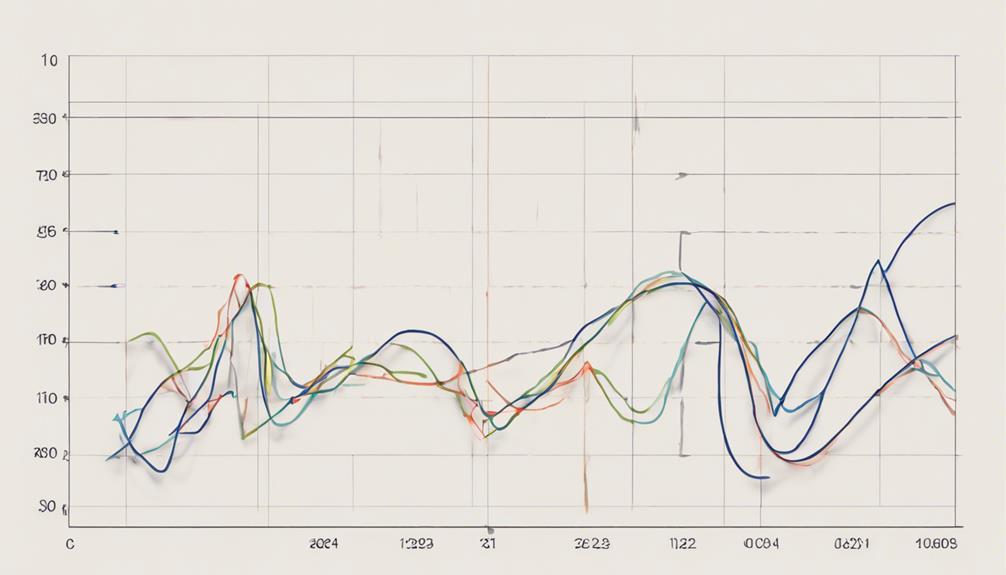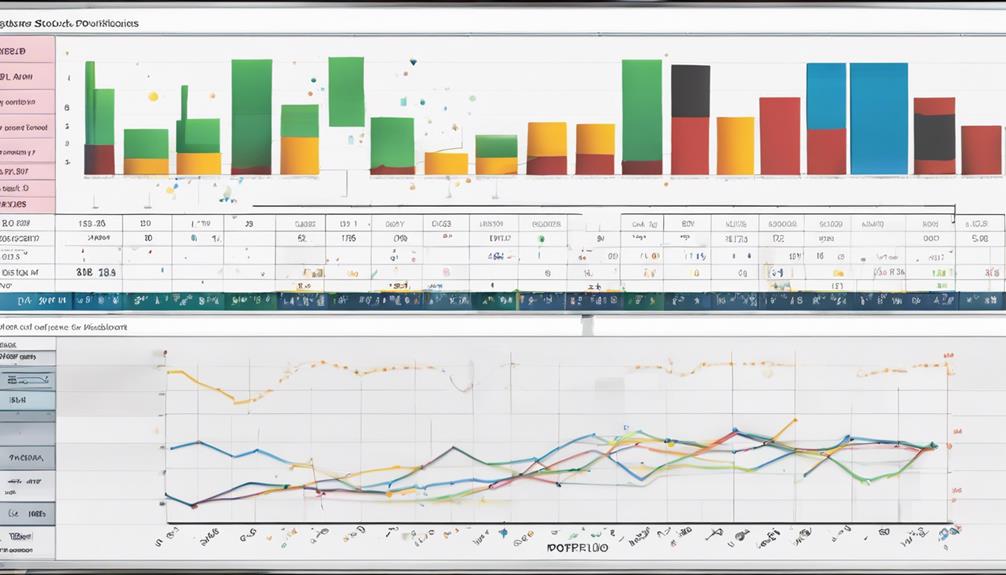Understanding the intricacies of standard deviation in stock analysis opens a gateway to a realm of critical insights for investors and analysts alike. From measuring volatility and risk to providing a standardized metric for data spread assessment, standard deviation plays a pivotal role in shaping investment decisions.
Delving into the five key aspects of standard deviation not only sheds light on historical volatility and risk management but also uncovers the nuances of interpreting variability in returns over time. As investors navigate the complexities of the market, grasping these fundamental aspects of standard deviation becomes imperative for informed decision-making and risk mitigation in the ever-evolving landscape of stock analysis.
Importance of Standard Deviation in Analysis
Analyzing the importance of standard deviation in stock analysis reveals critical insights into the volatility and risk levels associated with individual stocks. Standard deviation measures the dispersion of stock returns around the mean, providing a quantitative assessment of the stock's volatility. Investors rely on standard deviation to evaluate the potential price fluctuations and overall risk profile of a stock before making investment decisions based on their risk tolerance.
Understanding standard deviation is paramount for investors as it offers a glimpse into the potential risks involved in holding a particular stock. Stocks with higher standard deviations are considered riskier due to their increased volatility, while those with lower standard deviations are perceived as less risky with more stable price movements. By incorporating standard deviation into stock analysis, investors can make more informed choices, aligning their investment strategies with their risk tolerance levels for better portfolio management.
Calculating Standard Deviation for Stocks

Standard deviation for stocks is a crucial statistical measure used in financial analysis to quantify the volatility and risk levels associated with individual stock returns.
To calculate standard deviation for stocks, the first step involves finding the mean return by summing all returns and dividing by the total number of data points.
Next, you square the difference of each return from the mean, sum these squared differences to calculate the variance, and then divide by the number of data points minus one.
The standard deviation is then obtained by taking the square root of the variance. This final value provides a measure of the stock's volatility, helping investors assess the potential price fluctuations and associated risks within their investment portfolios.
Excel functions streamline this calculation process, enabling analysts to efficiently evaluate and compare the risk levels of various stocks in their financial analysis.
Managing Risk With Standard Deviation

Utilizing standard deviation as a metric for managing risk in stock analysis provides investors with a quantitative measure of the dispersion of stock returns around the mean. When it comes to managing risk with standard deviation, the following points are crucial:
- Risk Management: Standard deviation helps in assessing the level of risk associated with a particular stock by indicating the extent of variability in its returns.
- Stock Price Volatility: Higher standard deviation reflects greater stock price volatility, signifying increased risk exposure for investors.
- Risk and Return: Understanding standard deviation enables investors to evaluate the relationship between risk and potential return associated with a stock investment.
- Informed Decisions: Analyzing standard deviation in stock analysis allows investors to make informed decisions aligned with their risk tolerance levels, helping them choose investments that match their risk preferences.
Interpreting High Standard Deviation

Interpreting high standard deviation in stock analysis provides crucial insights into the level of price variability and associated risk for investors. High standard deviation signifies a greater degree of variability in a stock's prices around the average return.
Stocks with high standard deviation are deemed riskier as they exhibit a wider range of potential returns, indicating a higher level of uncertainty. Investors should anticipate more significant price swings and volatility in such stocks, as their performance can deviate substantially from the average in either direction.
Using Standard Deviation in Investment

The application of statistical measures in investment analysis aids in evaluating the risk and volatility associated with stock prices. Utilizing standard deviation in investment offers a valuable tool for making informed decisions and managing risks effectively. Here is how standard deviation is beneficial in investment:
- Quantifying Volatility: Standard deviation quantifies the dispersion of returns from the mean, providing a numerical measure of volatility in stock prices.
- Risk Evaluation: Higher standard deviation signifies increased unpredictability in stock prices, helping investors assess the level of risk associated with a particular investment.
- Informed Decision-Making: Investors incorporate standard deviation to align investment choices with their risk tolerance levels, enabling them to make well-informed decisions.
- Analyzing Stock Performance: Understanding standard deviation is crucial for analyzing stock performance and identifying potential risks, allowing investors to adjust their portfolios accordingly to mitigate risks and optimize returns.
How Does Standard Deviation Affect Stock Analysis and Prices?
When analyzing stock prices, understanding the standard deviation impact stock prices is crucial. It measures the volatility and risk associated with a stock’s price movements. Higher standard deviation suggests greater price fluctuations, indicating higher risk. Investors use standard deviation to assess potential outcomes and make informed decisions.
Frequently Asked Questions
What Are the 5 Steps to Calculate Standard Deviation?
To calculate standard deviation, one must first determine the mean of the dataset, find deviations from this mean, square each deviation, sum the squared deviations, divide by n-1, and take the square root.
What Is Standard Deviation in Stock Analysis?
Standard deviation in stock analysis quantifies the dispersion of stock returns around the mean return. It is crucial for investors to assess volatility and risk. Higher standard deviation signifies increased price fluctuation and risk, aiding in informed investment decisions.
What Are the Important Properties of Standard Deviation?
Standard deviation boasts essential properties in stock analysis. It reveals the dispersion around the mean, aiding in risk assessment due to stock return variability. Investors leverage this metric to gauge volatility and potential price shifts, crucial for informed decision-making.
What Does a Standard Deviation of 5 Tell You?
A standard deviation of 5 indicates a moderate level of variability in a dataset, with most values falling within 5 units of the mean. It suggests potential risk or volatility in stock returns, aiding investors in assessing performance consistency.
Conclusion
In conclusion, standard deviation in stock analysis plays a crucial role in measuring dispersion relative to the mean. It also helps in calculating risk and volatility, managing investment risk, and interpreting the variability of returns.
By understanding these key aspects of standard deviation, investors and analysts can make informed decisions, assess tolerance for risk, and recognize underlying risks in investments. It serves as a standardized metric for assessing data spread and aids in aligning investment objectives accordingly.
